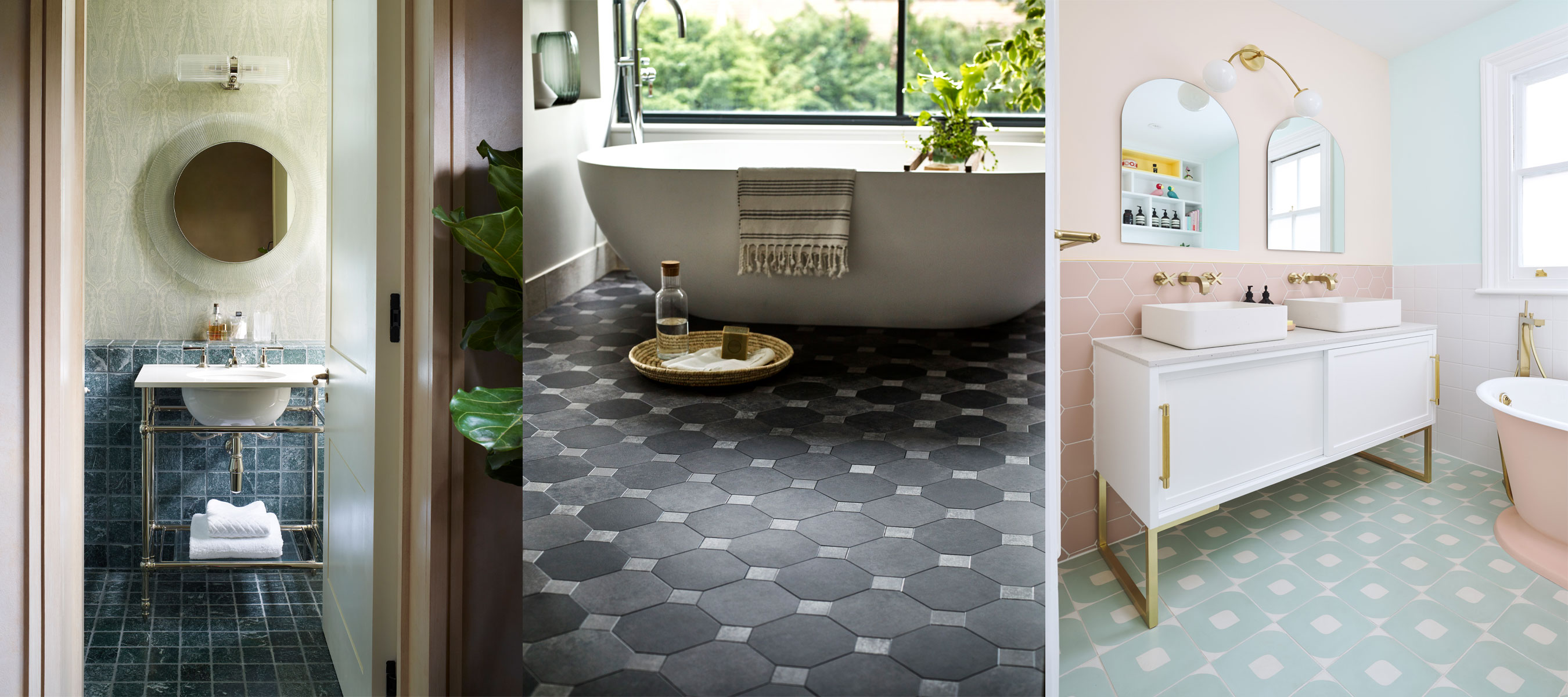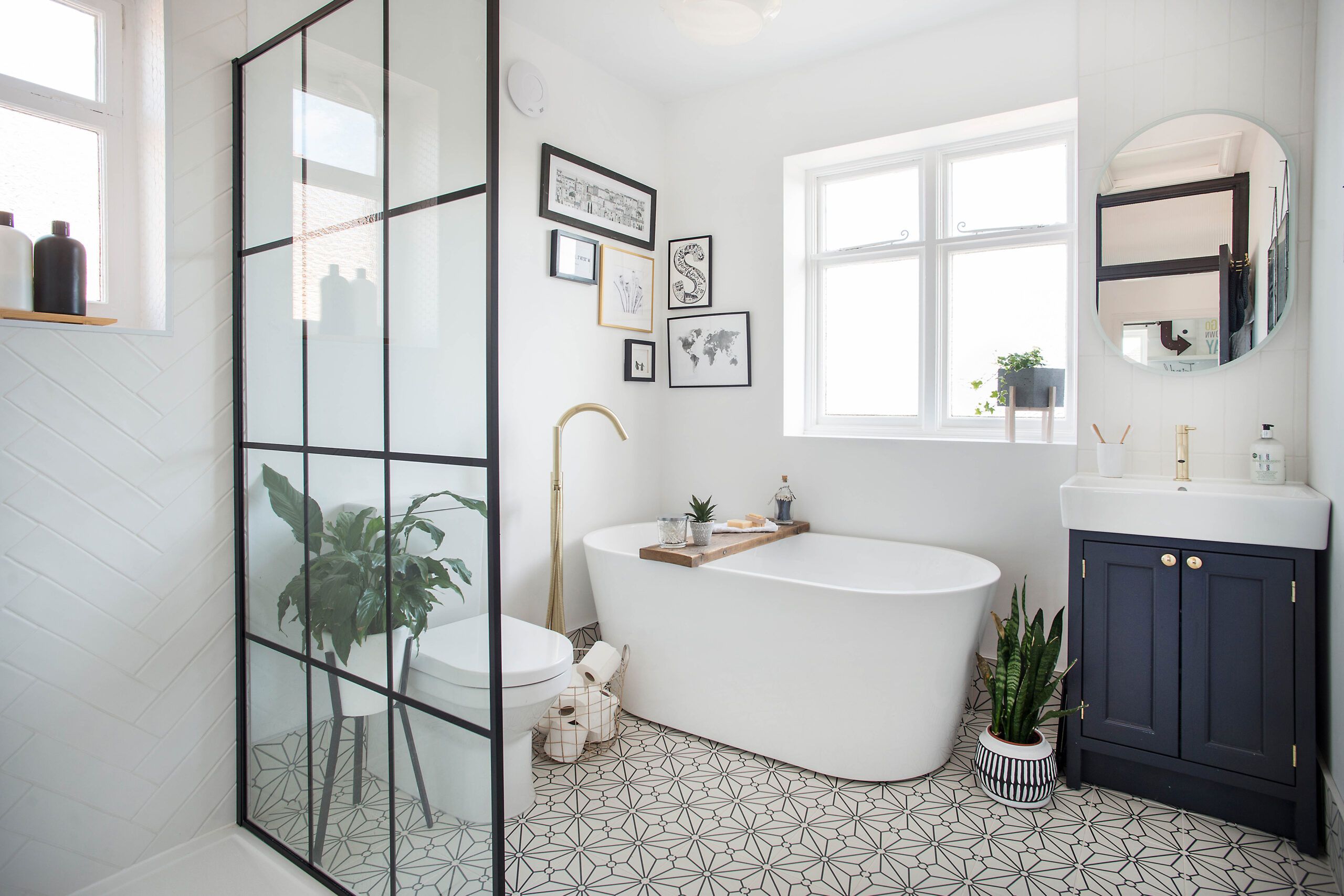Choosing the Right Flooring

Choosing the right bathroom flooring is crucial for both aesthetics and functionality. You want something that looks good, is durable, and can withstand the moisture and foot traffic of a bathroom. There are a bunch of DIY-friendly options out there, but figuring out which one is best for you can be a bit of a head-scratcher. So, let’s break it down, shall we?
Comparing Bathroom Flooring Options, Easy do it yourself bathroom flooring
To help you decide, let’s compare some popular DIY bathroom flooring options based on their pros, cons, and overall suitability.
Vinyl Tile
- Pros: Vinyl tile is super affordable, easy to install, and comes in a wide variety of styles and colors. It’s also waterproof and pretty durable, making it a good choice for high-traffic areas.
- Cons: Vinyl tile can be a bit flimsy and may not be as stylish as some other options. It can also be susceptible to scratches and dents over time.
Laminate
- Pros: Laminate flooring is known for its durability and realistic wood-look designs. It’s also relatively easy to install and can be quite affordable.
- Cons: Laminate isn’t as water-resistant as vinyl or tile, so it’s not the best choice for areas with high moisture levels. It can also be slippery when wet.
Luxury Vinyl Plank
- Pros: Luxury vinyl plank (LVP) is a step up from regular vinyl tile, offering a more realistic wood-look finish and greater durability. It’s also waterproof and easy to install.
- Cons: LVP is generally more expensive than vinyl tile or laminate, but it’s still a relatively affordable option compared to real hardwood or tile.
Peel-and-Stick Tile
- Pros: Peel-and-stick tile is the easiest to install, making it a great choice for DIYers. It’s also affordable and comes in a wide range of styles.
- Cons: Peel-and-stick tile is not as durable as other options and can be prone to peeling or lifting over time. It’s also not as water-resistant as vinyl or tile.
| Flooring Type | Cost | Durability | Water Resistance | Ease of Installation |
|---|---|---|---|---|
| Vinyl Tile | Low | Medium | High | Easy |
| Laminate | Medium | High | Medium | Easy |
| Luxury Vinyl Plank | Medium to High | High | High | Easy |
| Peel-and-Stick Tile | Low | Low | Medium | Very Easy |
Choosing the Best Flooring for Your Bathroom Style
“The best flooring for your bathroom depends on your personal style and budget.”
If you’re going for a modern look, consider using large-format tiles, luxury vinyl plank, or even polished concrete. For a traditional bathroom, you might opt for wood-look tile, laminate, or even ceramic tile with a classic pattern. If you’re going for a rustic vibe, consider using natural stone, reclaimed wood, or even cork flooring.
Preparing the Bathroom Floor

Alright, so you’ve chosen your new bathroom flooring, now it’s time to get your bathroom floor ready for the big makeover. Think of it like prepping a canvas for a masterpiece – you need a smooth, clean surface for your new flooring to shine!
Cleaning the Bathroom Floor
Before you start any major work, it’s important to give your bathroom floor a good scrub. You want to remove any dirt, grime, or old residue that could interfere with the installation.
- Start by sweeping or vacuuming the floor to get rid of any loose debris.
- Then, use a cleaning solution specifically designed for your existing floor type. You can find these at most hardware stores.
- For tougher stains, you might need a stronger cleaner. Be sure to follow the instructions on the cleaner’s label carefully, and wear gloves and eye protection.
- After cleaning, rinse the floor thoroughly with water and allow it to dry completely.
Patching and Leveling the Bathroom Floor
Once the floor is clean and dry, you need to check for any cracks, holes, or uneven areas. If you find any, you’ll need to patch them up before you install your new flooring.
- For small cracks or holes, you can use a patching compound. Simply apply the compound to the affected area, smooth it out, and let it dry completely.
- For larger holes or uneven areas, you might need to use a self-leveling compound. These compounds are designed to flow into cracks and depressions, creating a smooth, level surface.
- Follow the instructions on the patching or leveling compound’s label carefully.
Measuring the Bathroom Floor
Now, it’s time to measure your bathroom floor so you can purchase the right amount of flooring. You want to make sure you get enough to cover the entire area, but you don’t want to buy too much and waste money.
- Measure the length and width of your bathroom floor in feet or meters.
- Multiply the length by the width to calculate the total area of the floor.
- Add an extra 10% to the total area to account for waste and any cutting you might need to do.
- Remember to factor in any areas that you want to cover, such as under cabinets or around fixtures.
- You can also ask a flooring specialist at your local hardware store for help with calculating the amount of flooring you need.
Removing Old Flooring
If you’re replacing existing flooring, you’ll need to remove it first. This can be a bit of a chore, but it’s important to do it properly so you don’t damage the subfloor underneath.
- For tile flooring, you can use a hammer and chisel to break the tiles up.
- If you’re removing vinyl flooring, you can use a utility knife to cut it into smaller sections, then peel it up.
- Be careful not to damage the subfloor underneath when removing the old flooring. If you see any damage, you’ll need to repair it before installing your new flooring.
Installing the New Flooring: Easy Do It Yourself Bathroom Flooring

Now that you’ve got your bathroom floor prepped and ready to go, it’s time to get your hands dirty and install that new flooring. It’s a bit like assembling a giant puzzle, but with more tools and less frustration (hopefully).
Installing Tile Flooring
Tile flooring is a classic choice for bathrooms, and it’s pretty straightforward to install. Here’s a step-by-step guide to get you started:
- Laying the First Row: Start by laying the first row of tiles along the longest wall, making sure they’re perfectly aligned. Use spacers to maintain consistent grout lines.
- Apply Mortar: Spread mortar on the floor with a notched trowel, creating a smooth layer that will hold the tiles in place.
- Placing Tiles: Carefully place the tiles on the mortar, pressing down firmly to ensure good adhesion.
- Cutting Tiles: Use a tile cutter to cut tiles to fit around corners, pipes, or other obstacles.
- Grouting: Once the mortar has dried, apply grout to the spaces between the tiles. Use a rubber float to smooth out the grout and remove any excess.
- Sealing: After the grout has set, apply a sealant to protect the tiles and grout from water damage.
Tip: When cutting tiles, use a wet saw for clean cuts and a smooth finish.
Installing Vinyl Flooring
Vinyl flooring is a great option for bathrooms because it’s waterproof, durable, and easy to clean. Installing vinyl flooring is relatively simple, but you need to pay attention to the instructions for your specific type of vinyl.
- Laying the First Row: Start by laying the first row of vinyl planks along the longest wall, ensuring they’re flush with the wall.
- Securing the Planks: Use adhesive or a locking system to secure the planks to the floor.
- Cutting Planks: Use a utility knife or a specialized vinyl cutter to cut the planks to fit around corners, pipes, or other obstacles.
- Finishing Touches: Once the planks are installed, trim any excess vinyl and add transition strips if needed.
Tip: Make sure to use a level to ensure the planks are laid evenly.
Installing Laminate Flooring
Laminate flooring is a popular choice for bathrooms because it looks like real wood but is more affordable and easier to maintain. Installing laminate flooring is similar to installing vinyl flooring, but there are a few key differences:
- Underlayment: Lay a moisture-resistant underlayment over the subfloor before installing the laminate planks.
- Locking System: Most laminate planks use a locking system to connect them together.
- Cutting Planks: Use a circular saw or a specialized laminate cutter to cut the planks to fit around corners, pipes, or other obstacles.
Tip: When cutting laminate planks, use a fine-toothed blade to prevent chipping.
